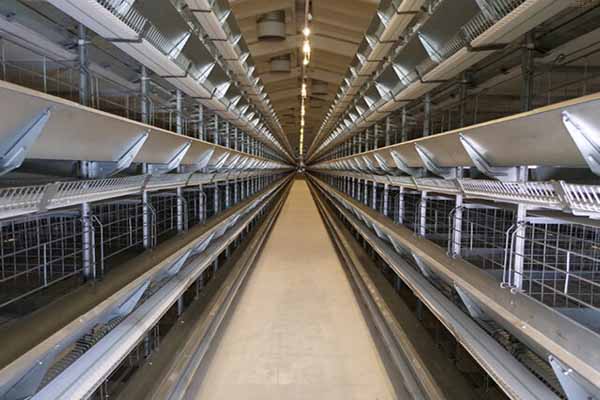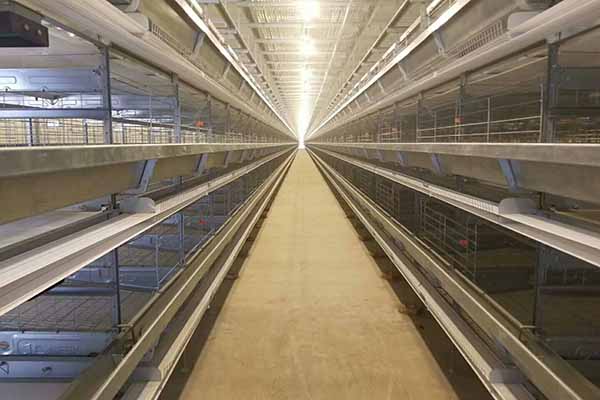How to Start a Backyard Chicken Farm: A Comprehensive Guide
Time : 2025-07-01
Starting a backyard chicken farm can be an exciting and rewarding endeavor. It allows you to have fresh, organic eggs, enjoy the companionship of chickens, and contribute to sustainable farming practices. However, it’s essential to approach it with knowledge and preparation. This guide will provide you with the steps and information needed to get started on your backyard chicken farming journey.
1. Research and Planning
Before diving into backyard chicken farming, thorough research and careful planning are crucial. Here are some key aspects to consider:
1.1. Purpose and Goals
Identify your reasons for starting a backyard chicken farm. Are you looking for fresh eggs, meat, or both? Do you want to breed chickens for specific traits or breeds? Defining your goals will help you make informed decisions throughout the process.
1.2. Local Regulations
Check with your local government to ensure that backyard chicken farming is permitted in your area. Regulations can vary widely, and some cities or neighborhoods may have strict limitations or outright bans on keeping chickens.
1.3. Space and Layout
Calculate the amount of space you have available and plan your chicken coop and run accordingly. Chickens need space to roam, forage, and lay eggs. Consider the following when planning your layout:
- Coop size: Aim for a minimum of 3-4 square feet per chicken inside the coop.
- Run size: Provide at least 10 square feet per chicken in the run.
- Orientation: Ensure the coop faces north to minimize heat exposure and maximize sunlight exposure.
- Privacy: Chickens like to feel secure, so consider placing your coop in a secluded area.
2. Choosing the Right Chicken Breeds
Selecting the right chicken breeds for your backyard farm is essential for a successful venture. Consider the following factors when choosing breeds:
2.1. Purpose
Decide whether you want egg-laying hens, dual-purpose birds (good for both eggs and meat), or ornamental chickens. Some popular egg-laying breeds include the Rhode Island Red, Plymouth Rock, and Orpington, while dual-purpose breeds include the Sussex, Jersey Giant, and Brahmas.
2.2. Climate
Choose breeds that are well-suited to your local climate. Cold-hardy breeds can withstand colder temperatures, while heat-tolerant breeds are better suited for warmer climates.
2.3. Space Requirements
Some breeds are more space-efficient than others. For instance, Silkies and Sebrights are smaller and require less space, making them ideal for small backyard farms.
3. Building the Coop and Run
Constructing a durable and comfortable coop and run is essential for the health and well-being of your chickens. Here are some key considerations:
3.1. Coop Materials
Use materials that are weather-resistant and durable. Common options include wood, concrete blocks, and metal. Ensure the coop has a secure door, ventilation, and roosting bars for the chickens to sleep on.

3.2. Run Design
The run should be predator-proof, with sturdy fencing and a roof to protect chickens from birds of prey. It’s also important to have a nesting area within the run for the hens to lay their eggs.
3.3. Equipment
Invest in quality equipment to make your chicken farming experience more manageable. Some essential items include:
- Egg boxes or baskets for collecting eggs.
- Waterers and feeders with automatic watering systems.
- Heaters for cold climates or incubators for brooding chicks.
4. Chicken Care
Proper care is essential for maintaining healthy chickens and a productive farm.
4.1. Feeding and Watering
Provide a balanced diet that meets the nutritional needs of your chickens. You can choose to feed them commercial chicken feed or a mix of grains, vegetables, and treats. Ensure fresh water is available at all times.
4.2. Health and Disease Prevention
Regularly check your chickens for signs of illness, such as changes in behavior, weight loss, or respiratory issues. Implement disease prevention measures, such as maintaining clean coops, practicing good biosecurity, and vaccinating your chickens as needed.
4.3. Social Interaction
Chickens are social animals and enjoy interaction with humans and other chickens. Spend time with your chickens daily to bond and monitor their behavior.
animals and enjoy interaction with humans and other chickens. Spend time with your chickens daily to bond and monitor their behavior.
5. Marketing and Selling
Once you have a productive backyard chicken farm, you may want to market and sell your products. Consider the following options:
5.1. Local Markets and Farmers’ Markets
Sell your fresh eggs, meat, or chicks at local markets or farmers’ markets. This provides an opportunity to connect with customers and promote your farm.

5.2. Online Sales
Expand your reach by selling eggs, meat, or chicks online. Create a website or utilize social media platforms to market your products.
5.3. Direct Sales to Local Businesses
Establish relationships with local restaurants, cafes, or bakeries to supply them with fresh eggs or meat.
6. Conclusion
Starting a backyard chicken farm can be a fulfilling and profitable endeavor. With thorough research, careful planning, and proper care, you can enjoy the benefits of fresh, organic eggs and the companionship of chickens. Remember to stay informed about local regulations, invest in quality equipment, and prioritize the health and well-being of your chickens.











